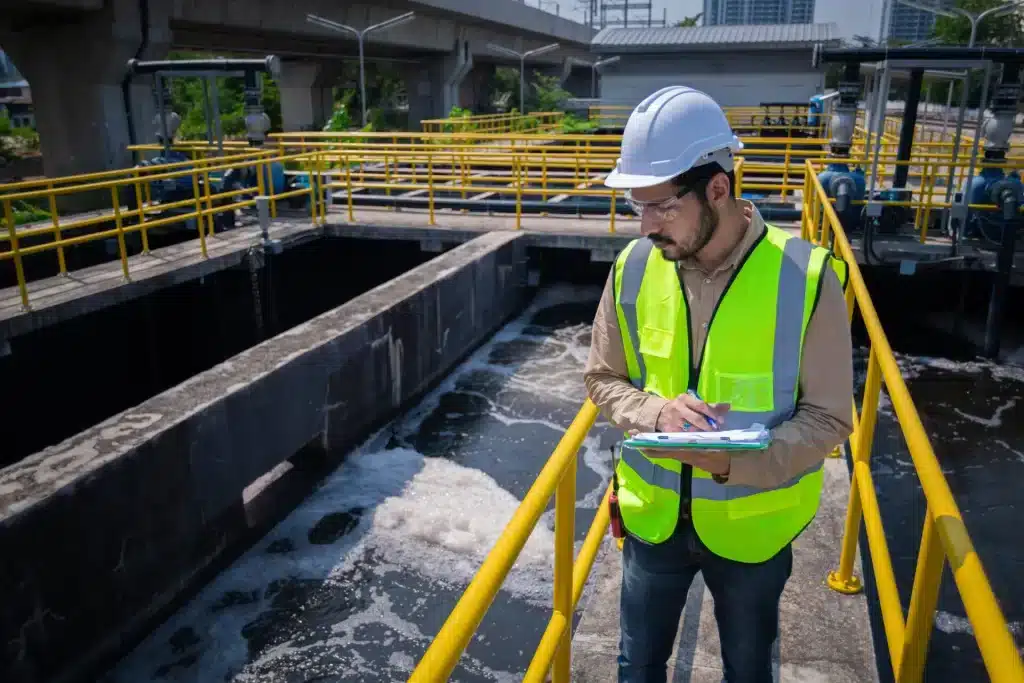Wherever water and wastewater are part of daily operations from municipal networks and industrial plants to construction sites and flood control projects reliable pumping is essential. Without it, processes stop, safety risks increase, and downtime quickly becomes expensive.
But what exactly is a wastewater pump? How does it work? And which type is the right fit for your application?
In this guide, we’ll break down the basics in a clear and practical way explaining how wastewater pumps operate, what to consider when selecting one, and how Gorman-Rupp solutions can support you with reliable, low-maintenance performance for the long term.
What Is a Wastewater Pump?
A wastewater pump is designed to move liquids containing solids, fibers, or other contaminants, the kind of fluids that appear in sewers, industrial effluent, stormwater, or process waste.
Unlike clean-water pumps, wastewater pumps are built to handle suspended solids and stringy materials without clogging. They play a vital role in sectors such as municipal sewage treatment, food and beverage processing, pulp and paper, mining, chemical processing, and construction.
At Gorman-Rupp, we’ve spent over 90 years engineering pumps that excel in exactly these challenging conditions, built for reliability, long service life, and minimal downtime.
How a Wastewater Pump Works
While the design details vary, most wastewater pumps share a few essential components and operating principles:
Key Components
- Impeller: Often semi-open or vortex-style to prevent clogging.
- Pump Casing: Made from materials that resist abrasion and corrosion.
- Seal or Packing: Keeps the motor dry and protected.
- Motor: Submersible or close-coupled, depending on installation depth.
- Inlet/Outlet: Sized to ensure proper flow, head, and solids handling.
Operating Principles
- Priming: Self-priming pumps remove air from the suction line to create suction, drawing liquid into the pump.
- Impeller Action: The rotating impeller imparts kinetic energy to the liquid, which is then converted into pressure.
- Solids Passage: Solids and fibers pass through without clogging thanks to specialized impeller designs.
- Discharge: The pump directs the contaminated liquid to a treatment facility or discharge point.
- Protection: Built-in safeguards, like temperature monitoring, dry-run protection, and automatic shut-offs, keep the system safe and reliable.
Gorman-Rupp self-priming wastewater pumps are designed with these principles in mind – combining robust performance with easy access for service and maintenance.
Types of Wastewater Pumps and Where They Excel
Selecting the right pump starts with understanding the main types and their best-fit applications:
- Submersible Wastewater Pumps
Installed directly in the fluid, submersible pumps are compact and efficient, perfect for sewage systems, stormwater control, or flood management. Their design uses the surrounding liquid for cooling, and many models offer modular construction for easier service. - (Prime-assisted) Self-Priming Pumps
Gorman-Rupp self-priming pumps, are installed above the liquid level and start pumping without pre-filling. They are ideal for remote installations, temporary bypass operations, or situations where priming assistance is difficult. They also offer unmatched ease of maintenance since they remain accessible from ground level. - Standard Centrifugal Pumps
A straightforward solution for applications where priming isn’t required. Our centrifugal pumps are widely used for process water, industrial effluent, or other wastewater streams. - Pre-Engineered Pump Sets
We offer complete, pre-engineered units that combine pump, motor, and controls, simplifying installation and ensuring component compatibility. These plug-and-play systems save time on setup and commissioning. - Gorman-Rupp ReliaSource® SCS Systems
For the most demanding wastewater challenges, our ReliaSource® packaged systems deliver rugged performance, low maintenance requirements, and reliable operation in continuous-duty environments. The optional SCS (self Cleaning Sump) system further reduces downtimes and improves reliability.
How to choose the right wastewaterpump?
Fluid Characteristics
Every application is different and so is the ideal pump solution. Here are the most important factors to consider:
- Solids Size & Concentration: Select an impeller type (vortex, non-clog) that can handle the load.
- Temperature & pH: Choose materials that resist corrosion and thermal stress.
- Fibers or Grease: Look for designs that minimize clogging.
Flow & Head Requirements
- Calculate your required flow rate and total dynamic head.
- Ensure the pump’s performance curve aligns with your system.
Installation Conditions
- Submersible or Dry-Mounted: Consider accessibility, space, maintenance needs and hygienic aspects.
- Footprint: Site constraints may limit your options.
Operational Priorities
- Duty Cycle: Continuous vs. intermittent use affects motor selection.
- Energy Efficiency: More efficient motors can reduce lifetime costs.
- Serviceability: Easy access and modular components reduce downtime and offer a more hygienic service environment.
Gorman-Rupp’s application specialists can help evaluate these factors and recommend the best solution for your operation.
Maintenance tips
Preventive maintenance keeps pumps efficient and avoids costly breakdowns. Here’s what to watch for:
- Inspect seals and impellers regularly for wear.
- Keep inlets and outlets free from debris.
- Monitor for unusual vibration or noise.
- Maintain proper lubrication and cooling.
- Keep critical spare parts on hand for quick replacement.
Our pumps are designed to make maintenance straightforward, with features like removable cover plates, quick-access impellers, and modular components that minimize downtime.
Conclusion
Wastewater pumps are more than just mechanical devices, they’re essential to keeping industries, municipalities, and infrastructure running smoothly. Understanding how they work and selecting the right type for your application can dramatically improve system reliability, reduce energy costs, and simplify maintenance. At Gorman-Rupp, we’ve dedicated decades to perfecting wastewater pump technology. Whether you need a reliable self-priming pump, a rugged submersible unit, or a complete ReliaSource® system, our team is here to support you, from selection and installation to long-term service and support.rt.


